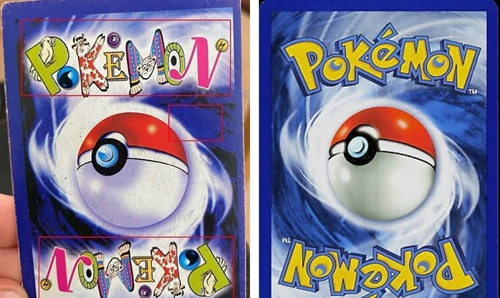Pokémon cards are not just collectibles—they are part of a global phenomenon that combines gaming, trading, and nostalgia. With their rising popularity, however, the market has seen a surge in fake or counterfeit Pokémon cards. Collectors and players must be vigilant to avoid being duped, as fake cards can have little to no value and may even damage your collection. Knowing how to identify fake Pokémon cards is essential for enthusiasts of all ages.

1. Check the Card’s Print Quality
- Genuine Pokémon cards have high-quality printing with sharp colors, precise fonts, and clear images.
- The artwork is vibrant and detailed, with no smudges, pixelation, or blurring.
- Fake cards often display faded colors, blurry text, and misaligned images, especially in the character artwork or energy symbols.
- Look closely at the Pokémon logo and trademark symbols; counterfeit cards may have slightly distorted logos or missing ® marks.
2. Examine the Card’s Material
- Authentic Pokémon cards are made of high-quality cardboard with a specific thickness and finish.
- They have a slight glossy coating on the front and a smooth matte finish on the back.
- Fake cards are often printed on thin, flimsy, or overly glossy paper. They may bend too easily or feel unusually light.
- A quick light test can help: hold the card up to a bright light. Genuine cards allow only a slight glow, while fakes may let light pass through easily due to lower-quality material.
3. Check the Holographic and Foil Effects
- Many rare Pokémon cards feature holographic or foil designs.
- Genuine foil cards have a uniform, reflective shine that catches light evenly.
- Fake cards often have patchy, dull, or uneven holographic effects.
- The reflection may appear pixelated or off-color, which is a clear sign of counterfeiting.
4. Inspect the Font and Text
- The text on Pokémon cards includes HP, attack names, damage, and abilities.
- Genuine cards have consistent font size, spacing, and alignment.
- Fake cards may have misspellings, inconsistent fonts, incorrect grammar, or misplaced numbers.
- Pay attention to the copyright information at the bottom; genuine cards display “© Pokémon / Nintendo / Creatures / GAME FREAK” clearly.
5. Examine the Card Back
- The back of a Pokémon card has a specific design with the classic Pokéball in the center and the word “Pokémon” in bold yellow letters.
- Fake cards often have incorrect colors, blurry borders, or uneven spacing on the back.
- Slight differences in shade or hue can indicate a counterfeit.
6. Compare Card Edges and Borders
- Real Pokémon cards have even, clean-cut edges.
- Fake cards may have rough, uneven, or too-thick borders.
- Hold the card under a bright light and check if the card bends or shows light unevenly along the edges; this is often a sign of a fake
7. Use a Reference or Online Database
- Pokémon cards can be cross-checked with official databases or collector sites.
- Look up the card’s set number, rarity symbol, and edition year to ensure authenticity.
- Fake cards may have incorrect set symbols, wrong year, or missing rarity indicators.
Quick Checklist: Real vs Fake Pokémon Cards
| Feature | Genuine Card | Fake Card |
| Print Quality | Sharp, vibrant, detailed | Blurry, faded, pixelated |
| Material | Thick, sturdy cardboard | Thin, flimsy, overly glossy |
| Holographic/Foil | Uniform, reflective | Patchy, dull, uneven |
| Text | Consistent, no spelling errors | Misspellings, misaligned |
| Card Back | Accurate colors, clear design | Off-color, blurry, uneven borders |
| Edges & Borders | Clean-cut, even | Rough, uneven, thick |
Final Thoughts
Identifying fake Pokémon cards requires attention to print quality, card material, holographic effects, text accuracy, card back, and edges. With practice, collectors can quickly spot counterfeit cards and avoid costly mistakes. Always buy from trusted sources, check the card’s details carefully, and when in doubt, compare it with known authentic cards. A vigilant approach ensures that your Pokémon collection remains valuable, genuine, and impressive.